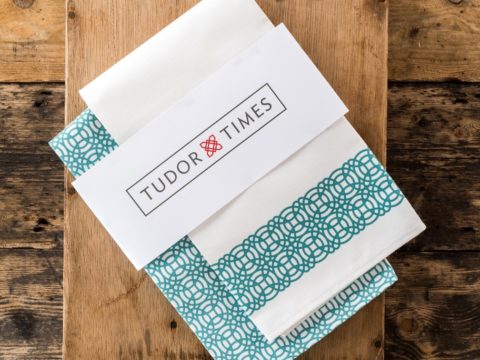Mary Sidney: Patron of Letters
More literary works were dedicated to Mary Sidney than to any other non-royal woman in England during the sixteenth and early seventeenth centuries. Dedication was an art in itself during the Renaissance period in both Europe and Britain. Artists and scholars in the first half of the century, joined by professional writers in the latter half, frequently dedicated work to public figures.
Dedications were generally made in hope of financial reward from the dedicatee, or as thanks for rewards already received. Given the length of time taken to create a work, choosing the dedicatee was an important step – the creator needed to select someone who would be interested enough in the content to give a suitable financial reward.
The content needed to be considered as well – accidentally insulting or offending a dedicatee through the subject matter would defeat the purpose. Original drama, in particular, as a relatively new form of literature was often defended by writers in their dedications.
The frequency with which Mary Sidney was a dedicatee may therefore be considered evidence that she was a generous patron of writers. Not all the writers who dedicated works to her, or referred to her in their work, were necessarily personally known to her.
The list below is of works dedicated to her, or where she is named or alluded to as a muse, a patron of poets, or an author herself. Many of the dedications run to pages of purple prose, so only a few lines are quoted here, where they tell us something about Mary’s generosity to authors. Dates are of contemporary publication. Some works circulated only in manuscript.
Barnabe Barnes
Dedicatory sonnet
Nathanial Baxter
Sir Philip Sidney's Ourania 1606
Nicholas Breton
The Pilgrimage to Paradise 1592
The Countess of Pembroke’s Passion
Auspiciante Jehovah: Marie’s Exercise 1597
A Divine Poem, divided into two parts: the Ravished Soul and the Blessed Weeper. 1601
W. C (possibly William Clerke, Master of Trinity College, Cambridge)
Polimanteia, . . . whereunto is added, aletter from England to her three daughters, Cambridge, Oxford, Innes of Court, and to all the rest of her inhabitants
Thomas Churchyard
A verse within A Pleasant Conceit, set in verse. This describes twelve ladies of Elizabeth’s court, and the verse dedicated to Mary sums up her public persona:
PEMBROKE a pearle, that orient is of kind,
A Sidney right, shall not in silence sit;
A gemme more worth, then all the gold of Ind,
For she enjoyes, the wise Minervaes wit,
And sets to schoole, our poets everywhere:
That doth presume the lawrell crowne to weare.
The Muses nine, and all the Graces three:
In Pembroke’s bookes, and verses shall you see.
Samuel Daniel:
The First Four Books of the Civil Wars 1595 (ottava rima – about the Wars of the Roses)
Sonnets to Delia 1592
Cleopatra 1594
Michael Drayton
Shepherd’s Garland, Fashioned in Nine Eclogues 1593
John Davies of Hereford
Wit’s Pilgrimage 1605
The Muse’s Sacrifice 1612
John Donne
Upon the Translation of the Psalms by Sir Philip Sydney and the Countess of Pembroke, his sister. In this work, Donne refers to them as ‘Moses and Miriam’.
Abraham Fraunce
The Lamentations of Amyntas for the death of Phillis, paraphrastically translated out of Latin into English Hexameters 1587
Arcadia Rhetoric, 1588
The Countess of Pembroke’s Emanuel 1591
The Countess of Pembroke’s Ivychurch. Containing the affectionate life, and unfortunate death of Phillis and Amyntas 1591
The third part of the Countess of Pembroke’s Ivychurch, entitled Amintas Dale. Wherein are the most conceited tales of the Pagan Gods in English Hexameters 1592
Charles Fitzfeoffrey
Caroli Fitzgeofridi Affaniae 1601
Thomas Howell:
Devises 1581
Aemilia Lanyer
Salvatore Deus, Rex Judaeorum 1611.
This was addressed to several ladies, beginning with Queen Anne. Mary is the subject of the part named The Author’s Dream.
Henry Lok
Extra Sonnets
Francis Meres
Palladis Tamia: A Comparative Discourse of Our English Poets with the Greek, Latin, and Italian Poets. 1598
He says of Mary:
Mary, the honourable
Countess of Pembroke, the noble sister of immortal
Sir Philip Sidney, is very liberal unto Poets; besides
she is a most delicate Poet,
Thomas Morley
Canzonets, or little short songs, to three voices 1595?
Thomas Moffet
The Silkworms and their Flies 1599
‘Who [Mary] never yet on meanest scholar frowned…
… the most renowned
Patroness and noble Nurse of learning.’
Thomas Nashe
Astrophel and Stella 1591
Robert Newton
The Countess of Mountgomerie’s Eusebeil 1620
Whilst the main target for this was Mary’s daughter-in-law, Lady Susan de Vere, Countess of Montgomery, Mary is included in the dedication.
Daniel Rogers
Epigrammatum 1586.
This gives an insight into another skill for which Mary was apparently known – needlework:
A pattern & a patroness she was,
Of virtuous industry, and studious learning:
And she her earthly pilgrimage did pass
In acts, which were high honour most concerning.
Brave Wilton-house in Wiltshire well can show,
Her admirable works in Arras framed:
Where men, and beasts, scene-like, trees seem to grow,
And Art (surpassed by Nature) seems ashamed.
Thus this renowned honourable dame,
Her happy time most happily did spend:
Whose worth recorded in the mouth of fame
(Until the world shall end) shall never end.
She wrought so well in needle-work that she,
Nor yet her works, shall ere forgotten be.
William Smithe
A New Year’s Gift: Made upon certain flowers
Edmund Spenser
The Ruins of Time 1591
A sonnet within the ‘Faerie Queen’ 1590
References within ‘Colin Clouts come home again’ 1595
Sir John Stradling
Epigrammatum, Libri Quatuor 1607
Thomas Watson
Amintae Gaudia 1592
